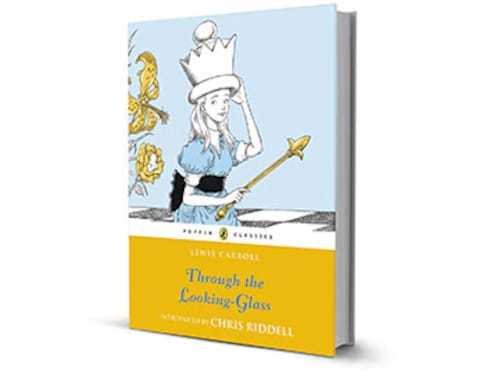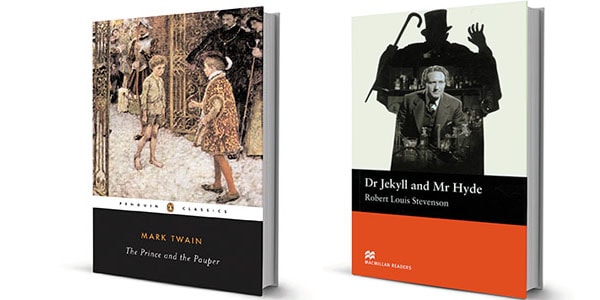The shadow self: Doubles and nemeses in literature
From the classics to the contemporary, authors have played with forms and style


In an age where flash fiction has made way for tweet-sized narratives, an online group recently invited entries for two-sentence horror stories. Among the submissions was this: “I begin tucking him into bed and he says, ‘Daddy, check for monsters under my bed.’ I look underneath for his amusement and see him, another him, staring back at me quivering and whispering, ‘Daddy, there’s somebody on my bed.’”
The staple interpretation would be that one of the two kids is a monster, but the possibility that both might be authentic is just as intriguing. It taps into our deepest subconscious fears built around the idea of the double or the doppelgänger—a shadow-self that may be more ‘real’ in some ways than we are, implying that our knowledge of ourselves and the world we take for granted is incomplete.
Readers familiar with Bill Watterson’s great comic strip Calvin and Hobbes may picture the brattish Calvin as the boy in the story. Drooling monsters under the bed are a feature of Calvin’s rich inner life, but so are alter egos and doubles, beginning with his stuffed tiger and companion in fantasy Hobbes. On a website containing off-kilter, subtextual movie analyses, I once read an essay suggesting that the protagonists of the film Fight Club—an unnamed man and his aggressive hidden self, who encourages him to explore his masculinity—are versions of the grown-up Calvin trying to deal with his isolation. I doubt that Chuck Palahniuk—the author of the novel on which the film was based—had any such thing in mind, but his book, like Watterson’s series, comments on the schizophrenia that accompanies the stresses and demands of modern life.
Doubles or nemeses in literature go back a very long way though. There are the classic formulations in works such as Robert Louis Stevenson’s Dr Jekyll and Mr Hyde (a doctor isolates the darker side of his nature, then finds that the primal savage he has thus unleashed is the dominant self) and Edgar Allan Poe’s William Wilson (a debauched young man is shadowed by a lookalike, who seems intent on revealing the former’s misdemeanours). But there are also stories where the double theme is less immediately apparent. Joseph Conrad’s The Secret Sharer is told in the voice of a young, unnamed ship’s captain who allows a mysterious man named Leggatt aboard his vessel one night and keeps him hidden in his cabin as we learn about the stowaway’s past, we see how it could be a cautionary tale for the narrator.
Interestingly, when the story first appeared in print more than a hundred years ago, it was called ‘The Secret-Sharer’, meaning that the captain and Leggatt shared a secret—but Conrad later decided to remove the hyphen, making the title more ambiguous. His most influential novel Heart of Darkness can be read in similar terms too, with its premise of Charles Marlow, a man from the ‘civilised’ world, travelling into the Congo to meet an enigmatic slave-trader, Mr Kurtz. Thanks to his brief encounter with the deranged Kurtz, Marlow eventually returns with his own sanity intact and a clearer understanding of dark and dangerous places—not just in the physical world but also in the human soul. In one sense, he is like a Jekyll who gazed into the abyss and survived the test.As should be evident, the main tenor of the doppelgänger theme is gloomy and oppressive, but there are lighter narratives too: In Mark Twain’s The Prince and the Pauper, two young boys, who happen to be dead ringers, switch places so they may live each other’s lives, and in Anthony Hope’s adventure-thriller The Prisoner of Zenda, an Englishman impersonates the king of a small country. Neither of these books is weighed down by psychological analysis, but they have things to say about the tenuousness of identity and the nourishing aspects of role-playing. Then there is Lewis Carroll’s enchanting Through the Looking Glass, a follow-up to Alice’s Adventures in Wonderland, in which Alice steps through a mirror and discovers a world that is not quite a straight ‘reflection’ of the one she knows. Carroll’s books have inspired several tributes, such as Neil Gaiman’s novella Coraline—a modern horror-fantasy for children—about a girl discovering a locked door at the back of a house she and her parents have just moved into. Behind it lies a distorted-mirror version of her own house, complete with ‘another’ mother and father who are pallid and automaton-like and have buttons for eyes. That sounds creepy, but haven’t most of us, at some time or other, viewed our own parents in similar terms? And will Coraline be able to make the right choice?
The double motif has had an extensive life in genre films too—it recurs through Alfred Hitchcock’s body of work, for instance. The Hitchcock film that most explicitly dealt with the split personality was Psycho, based on Robert Bloch’s book about a lonely motel-keeper and his mysterious ‘mother’, but an equally notable occurrence is in Strangers on a Train, adapted from Patricia Highsmith’s tightly crafted novel. Highsmith would later write a series of thrillers featuring Tom Ripley, a chameleon-like conman who slips into other people’s identities—but Strangers on a Train features a chilling variant on the phenomenon known as the folie à deux (“a madness shared by two”), which has been a touchstone of much modern crime writing. Here, Guy Haines is persuaded by the sociopathic Bruno Anthony to “swap murders”—each of them does away with someone the other would like to get rid of, so that linking the two deaths would be impossible. Guy and Bruno are initially presented as very different personality types, but by the time the former is implicated in the plan, the line between them is disappearing.
The line between an author and his creation can often be blurred too. Take the fictional Nathan Zuckerman, who has narrated many of Philip Roth’s books starting with the aptly titled The Ghost Writer in 1979. Here is a notable example of a character who functions as a novelist’s alter-ego: Like Roth himself, Zuckerman is a Jewish writer of literary fiction, born in 1933. Roth finally put his double to rest in Exit Ghost, in a narrative about a writer suffering from physical ailments and an unreliable memory but still hankering to be “back in the drama, back in the turmoil, wanting to be with people again and […] feel the pleasure of one’s power again”. Was saying goodnight to Nathan a form of slaying the double under his bed while acknowledging his own mortality? After all, writers and their creations are secret sharers too.
The author is a Delhi-based writer and journalist
First Published: Jun 17, 2014, 07:18
Subscribe Now(This story appears in the Jan 08, 2010 issue of Forbes India. To visit our Archives, Click here.)
